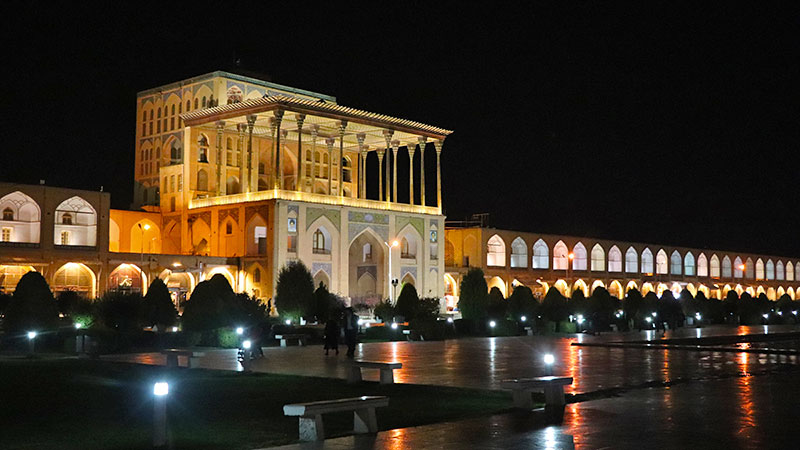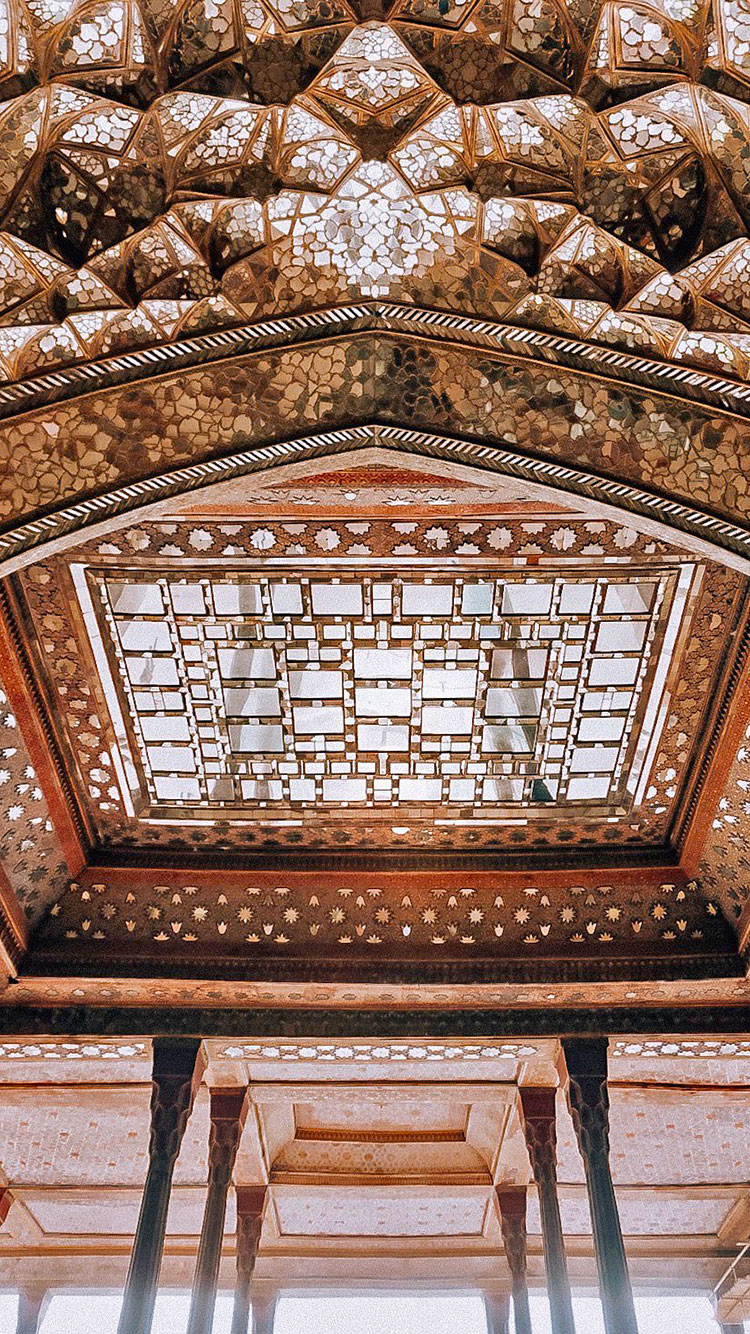 Signin with Google
Signin with Google Signin with Facebook
Signin with Facebook Places
PlacesAli Qapu, a Terrace over Half of the World

The Grand Ali Qapu
The first Iranian skyscraper was built in the city of Isfahan during the 16th century. However, later on, Shams- Ol Emareh, the five-storey mansion of the Qajar era in Golestan Palace stole this title from Ali Qapu. Ali Qapu has an eye-catching view over Naqsh-e-Jahan square and stands opposite the impressive Sheikh Lotfollah Mosque.

The softness of the colours and the elegance of the designs allow you to enjoy more as you pay more attention to the detail all over the forty-eight-meter height and with the six-storey building. However, if you walk around the building before entering, you realize this mansion looks different from each side. From the front, all you see is two storeys, from the sides, four storeys and from behind the building, you can see six storeys. This unique design is considered a magnum opus in the history of Iranian architecture. All the paintings belong to the greatest painters of Persian history.
The name Ali means sublime and Qapu means gate in Azari Turkish. It was in this building that the great Safavid monarchs entertained the noble visitors and foreign ambassadors.
Kings of the game, games of the king
Isfahan was the second capital of the Safavid Dynasty. Since then, vast constructions were initiated, which resulted in the creation of divine buildings. Ali Qapu, located on the west side of the Naqsh-e-Jahan square was the shah's palace and the place for resolving national affairs. It was the main entrance to the other palaces. Subsequently, the building became the symbol of the political and physical presence of the state government.

The current Naqsh-e-Jahan square was, in fact, a polo game field, in which polo matches took place. Shah Abbas, the Great, has played polo himself, and the royal family would sit on the balcony and watch the polo game taking place. Naqsh-e-Jahan square was a social centre for religious and national events such as Nowruz and in the evenings, a place for entertainers like jugglers, acrobats, dervishes, etc.
Decorations and Details
The Ali Qapu palace has six storeys; each storey has ornaments based on its applicability. The first two floors were for servants and guards. They have minimum usage of embellishments and paintings. The third floor has the biggest hall of the building, opening to an enormous balcony with 18 columns and a copper pond. This floor was known as the dais of the shah. The fourth and fifth floor has no creativity in the structure since it was lounging and sleeping rooms for the shah's wives. The sixth floor is called the music hall.

This room is full of innovations and wall paintings. The music hall contains details of etched plasterwork portraying all styles and shapes of music instruments. These rooted circular corners in the walls have aesthetic and acoustic values. The shah used the music hall for his highly confidential meetings since the room was soundproof. Moreover, the royal receptions and festivities were held in this room. Ali Qapu is rich in its genuine paintings by the famous painter Reza Abbasi. He was one of the court painters of Shah Abbas.
An architectural miracle
The entrance of this building is square-shaped with a remarkable feature. If you stand on the corner and another person stands on the opposite corner of the entrance, then all you need to do is to whisper something quietly. You will be amazed to see that the other person across the hall will be able to hear the words, which is due to the semi-circled shapes of the ceiling.

The architects of this building reused ideas from the Chini-Khaneh in the UNESCO-listed site of Sheikh Safi's Shrine Ensemble in Ardabil, Iran. Chini-Khaneh, meaning the house of vases, now a museum, is a large room filled with small niches in a variety of forms. There are 1256 niches, presenting gifted wares from the Chinese Emperor to Shah Abbas Safavid.
By Maryam Mobarhani / TasteIran


